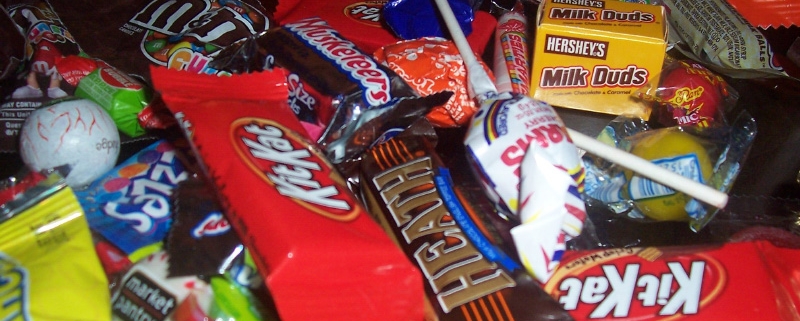How to Celebrate Halloween in an Environmentally-Responsible Way
Story originally appeared on FoodCary.
Cary, NC – Halloween is known for its candy and trick-or-treating, but in many candies, there is an unseen environmental cost. Here are some tips on how to make sure you can be responsible while celebrating the season.
Palm Oil and Candy
Almost all of the candy you will buy for Halloween contains some amount of palm oil, a vegetable oil derived from palm trees that has a variety of uses in cooking and food processing. With chocolate candy, it reduces the risk of melting while also giving chocolates shiny coating. But palm oil is also used in most cookies for texture and as a replacement for fats in butter.
The problem arises in how palm oil is produced. Because of the high demand, rain forests are removed to make way for palm oil trees, which are then cut down to harvest the oil. This not only results in a massive loss of forest land but also the elimination of habitat in very biodiverse regions of the planet.
However, with pressure on producers rising, there are now various candies that no longer use palm oil, with many of these companies also partnering with the Roundtable on Sustainable Palm Oil (RSPO).
One way to make sure is by not buying packs of candies with a variety mixed in. Buy a uniform bag of candy so you have a better idea of what you are getting.
For chocolates, regular Hershey’s milk chocolate, dark chocolate and the varieties with almonds do not use palm oil, though the “Hershey’s miniatures” does. Hershey’s kisses are also palm oil-free, though the “Hershey’s hugs” variety uses palm oil. As of right now, it appears all M&Ms flavors do not use palm oil except for peanut varieties. Classic Reese’s peanut butter cups do not use palm oil but the specialty shaped ones do.
For non-chocolate candies, all Jolly Ranchers aside from the “chewy” variety are palm oil free. All Brach’s brand candy corn is also palm oil free. Most lollipop brands also do not use palm oil. Packets of Nerds are typically palm oil free but with such a large number of flavors, there may be some that use it.
Also make sure to double check the labels for any candies you are not sure of. There are also a variety of names used instead of palm oil, such as palm kernel oil, mono- and diglycerides and cocoa butter substitutes.
. Your candies may also have a label with RSPO that shows they are either not using palm oil or have sourced their palm oil from an environmentally sustainable source.
To read the full story with more tips on being environmentally-friendly on Halloween, go to FoodCary.com
Story by Michael Papich. Photos by Rochelle Hartmanand Sean Loyless.





